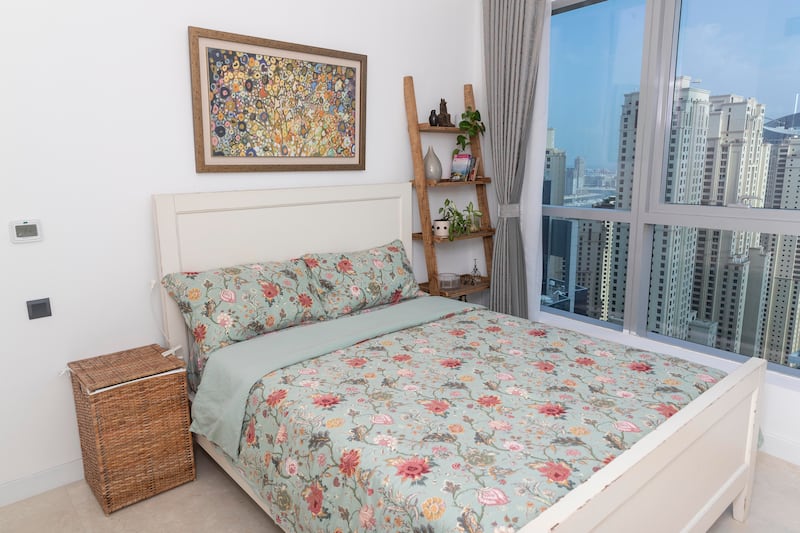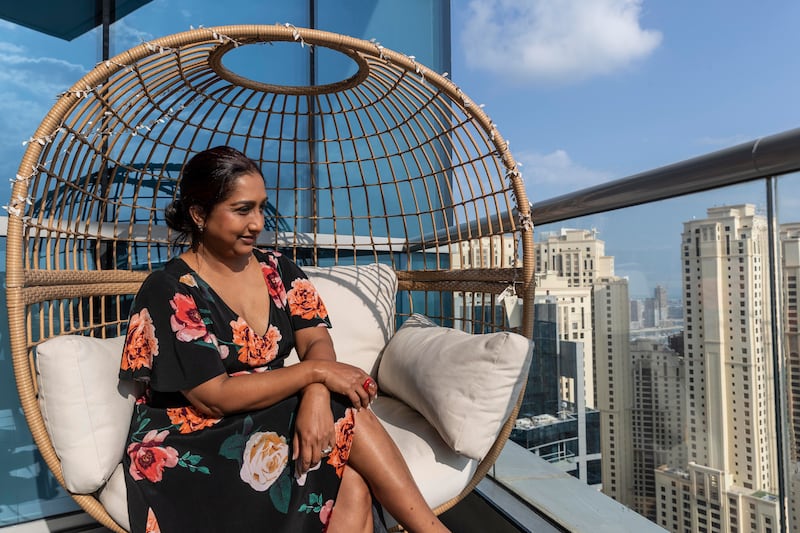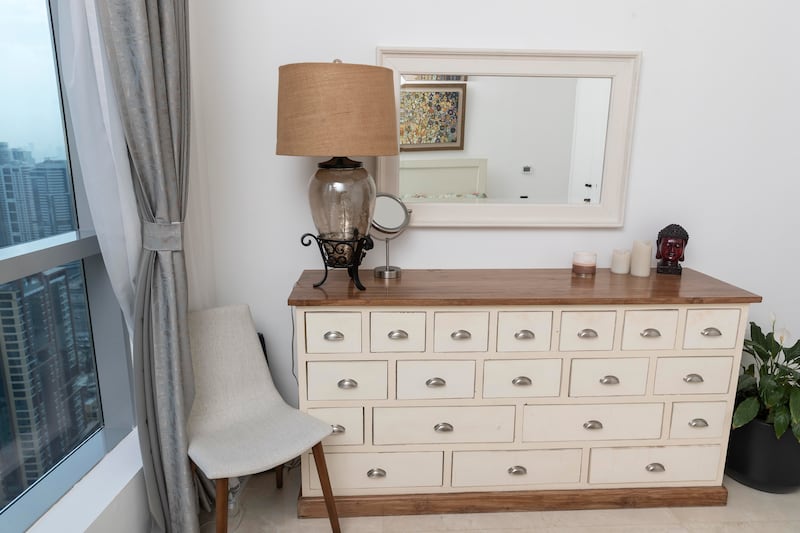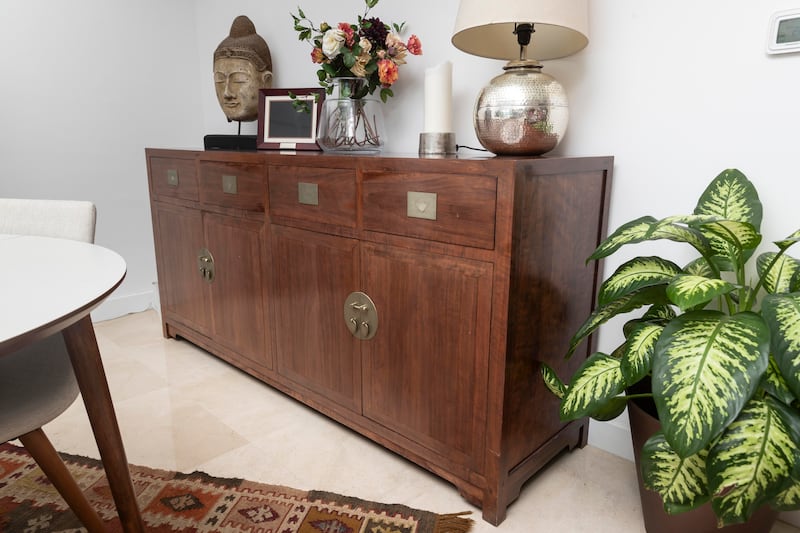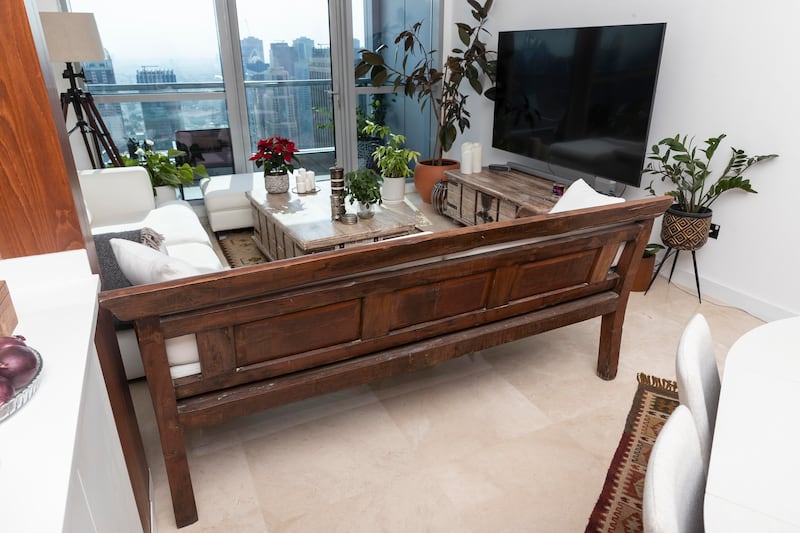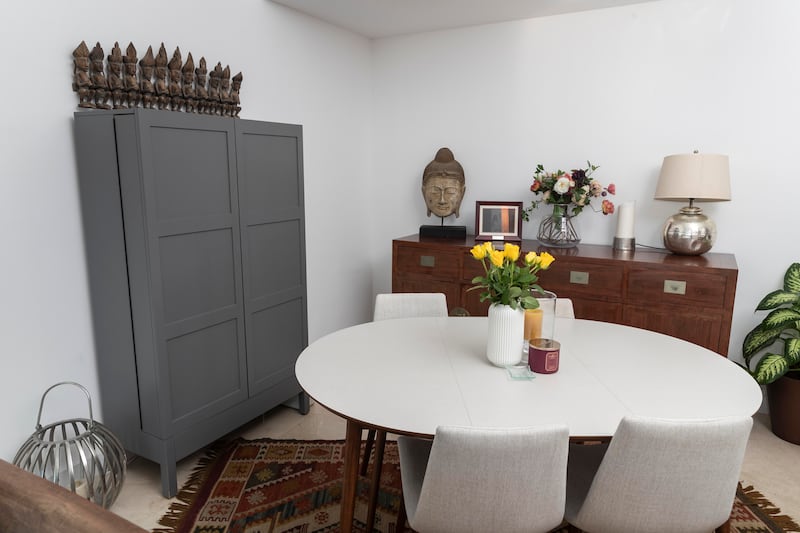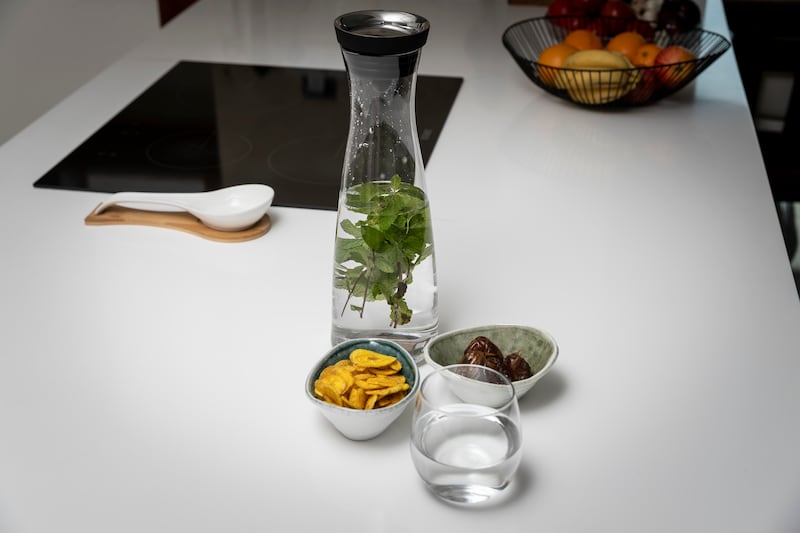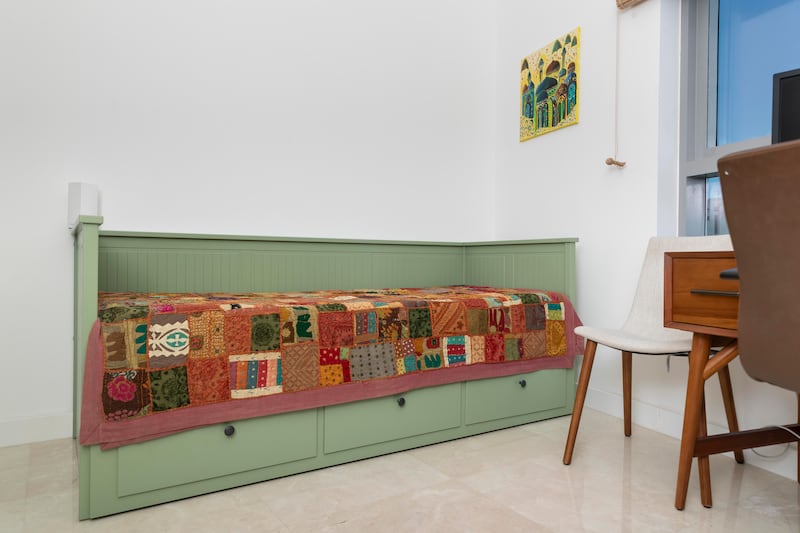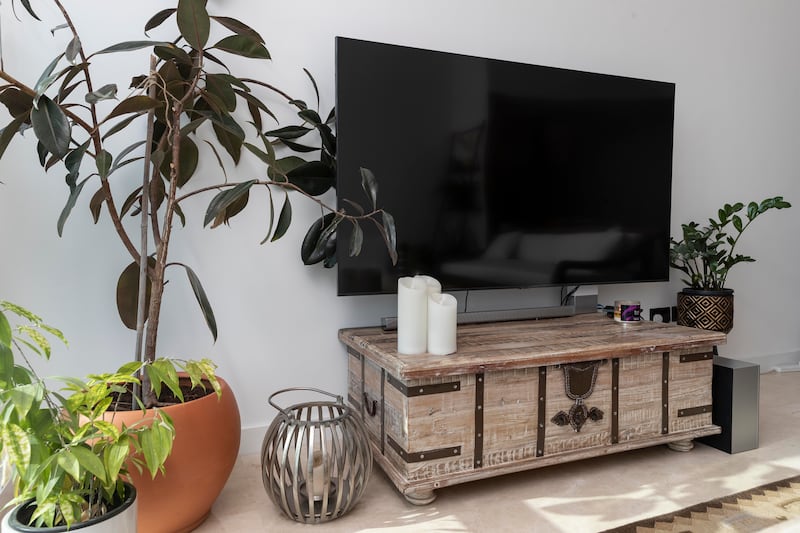When Charu Bjuvestig and her husband left London in search of a new adventure in warmer climes, they arrived in the UAE with only two suitcases and found an apartment they liked in Dubai Marina.
Faced with the task of furnishing her home from scratch, Bjuvestig decided to use an alternative approach – one that would save money while also promoting sustainability. She opened up Facebook Marketplace and started shortlisting furniture, decor, lighting, plants and even crockery. “I bought everything from a spoon to a car. We literally just came with shoes and clothes,” Bjuvestig, a strategic adviser who is originally from India, tells The National.
Today, the entire home is furnished with all of five brands, none of which were bought from a mall. Rather, Bjuvestig sourced all her preloved Pottery Barn, Crate & Barrel, West Elm, The One and Marina Home pieces from Facebook Marketplace, along with one special piece from Ikea.
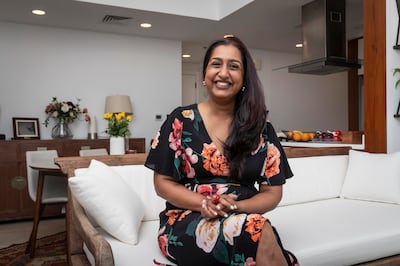
“My husband is Swedish, so we had to get an Ikea piece, but it’s kind of unique,” says Bjuvestig, pointing to the Hemnes daybed that she has in a limited-edition hue of pistachio, further enlivened with a patchwork quilt.
Space full of stories
Full of earthy elements, ethnic touches and statement heritage pieces, Bjuvestig’s decor is best described as bohemian with a sophisticated flair. There’s a wooden bench made in Indonesia that was in one man’s family for more than 100 years, modernised here with white cushions.
There’s a buffet whose previous owner had it custom-made in China by a famous woodworker. In Bjuvestig’s apartment, it’s topped with a large Buddha sculpture, a glass vase with faux flowers and a statement silver lamp – all second-hand, of course.
There’s also a sleek grey bar cabinet from a couple who retired and moved back to Germany. Even the small ceramic trays on the kitchen counter containing dates and dried banana chips were sourced – these from a woman who left Dubai and is now trekking across Peru. The curtains in both bedrooms of the house were also pre-owned.
Bjuvestig’s favourite piece is a wicker chair placed in her bedroom balcony, where she sits to read. Its story is serendipitous, she says – she saw it in-person at Ace and loved it so much she decided to buy it when she got home. “Then I looked on Facebook Marketplace and saw it there on sale. I called and the woman said: ‘If you can pick it up in an hour, it’s yours!’
“I’m a big believer in the law of attraction and manifestation,” adds Bjuvestig.
While most items are sourced from other peoples’ homes, Bjuvestig’s is not without its personal touches. She spent 25 years in the corporate world as a managing director, and is currently working from home as a trader. Seeking ways to get more creative with the free time she now has, she has joined a painting studio and pottery class in Dubai – and two of her own artworks hang in the home office.
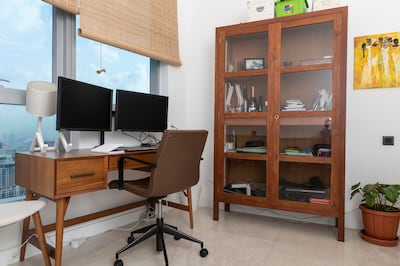
She estimates that 90 per cent of the items in her home are preloved – exclusions include a 75-inch television and a large potted plant.
'It's a nice feeling'
The couple furnished their apartment in a total of six weeks – two weeks were spent browsing the marketplace online and four weeks going to see the items in person and make their purchases. Everything was marked down by more than 50 per cent of its original price, and Bjuvestig estimates saving at least Dh20,000 by opting to buy everything second-hand.
“That’s being conservative, because I lost track after a point,” she adds.
A bonus was the social aspect of sourcing the second-hand pieces. “We have met people from Turkey, Canada, South Africa, Indonesia, Tunisia and Belgium,” says Bjuvestig, who spent two hours sharing stories with one of the sellers. She keeps another seller updated with photos of the plants she bought from her – “so she knows they’re still living” – and even offered her the guest room for her visits back to Dubai.
Bjuvestig points out that while there are some cultural stigmas against shopping second-hand, it’s a lifestyle that is often misunderstood. “There’s a difference between trash and second-hand,” says Bjuvestig, who loves the fact that antiques go through so many hands.
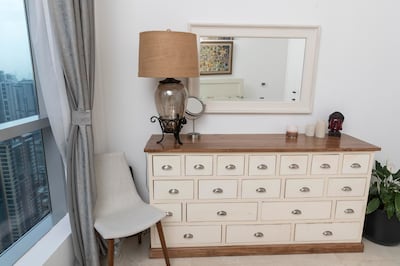
“I’ve always been into sustainability, I try to do my bit and not waste stuff,” she adds. She also prefers the overall experience of shopping second-hand than making a purchase at a mall: “With this, there’s no unpacking, you pay cash, you don’t have credit, you just own it. It’s a nice feeling.”
Second-hand home shopping can get addictive, notes Bjuvestig, who still has a few items on her wish list – including a coffee maker and large lanterns for her balconies. She says she has a newfound appreciation for preloved home furnishings in part because of the families that owned them, and the memories and emotions they are imbued with.
Consequently, when her friends tell her to just go buy them at a furniture store, especially when there are sales on, Bjuvestig declines, offering a simple explanation for her preference and patience: “There’s no story then.”
